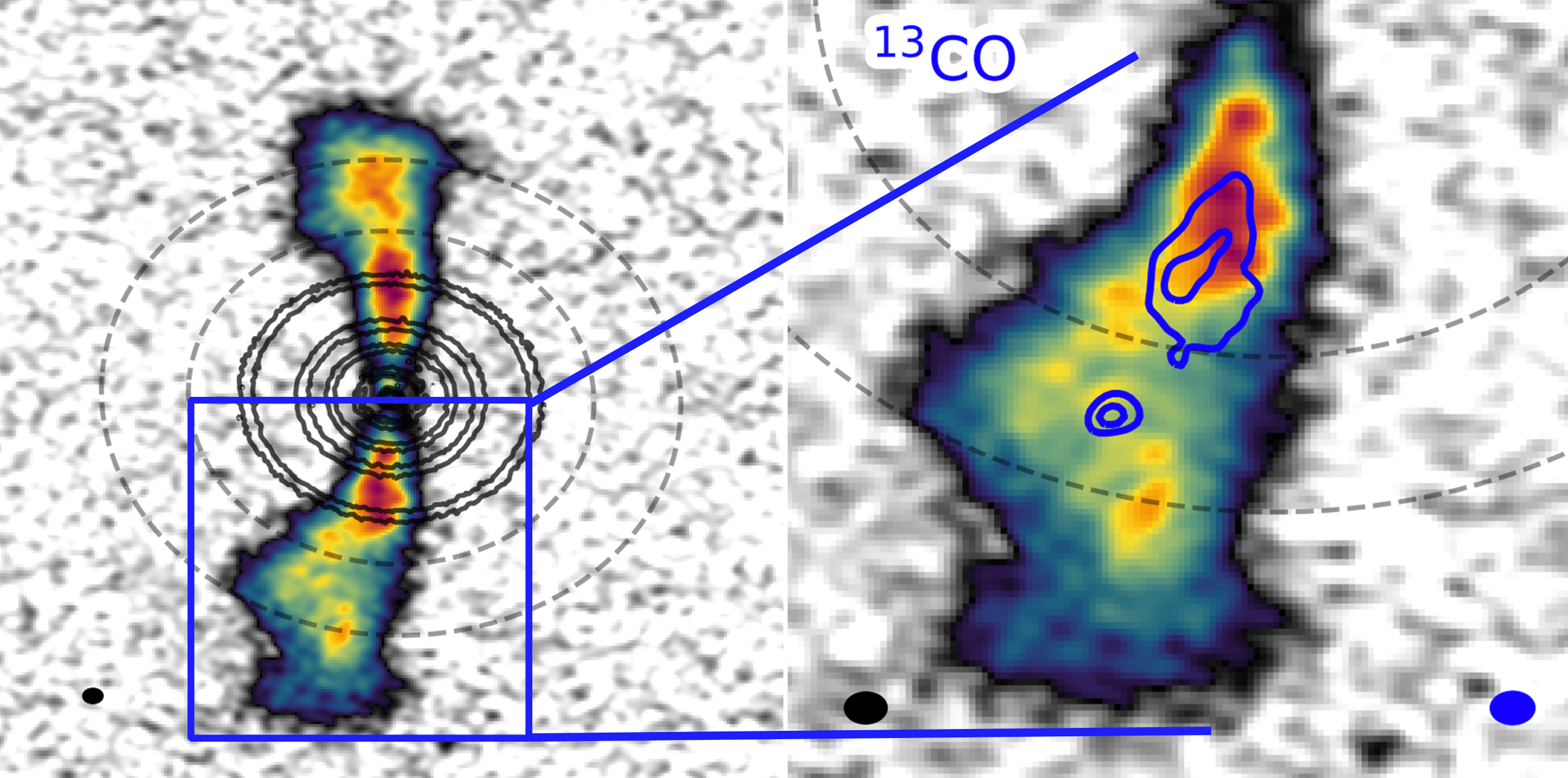
Credit: ALMA (ESO/NAOJ/NRAO), J. Bae (U. Florida)
Scientists using the Atacama Large Millimeter/submillimeter Array (ALMA) and partners at the National Radio Astronomy Observatory (NRAO) have made the first-ever detection of gas in an circumplanetary disk. What’s more, the detection also suggests the presence of a very young exoplanet. The results of the research are published in The Astrophysical Journal Letters.
Circumplanetary disks are an amassing of gas, dust, and debris around young planets. These disks give rise to moons and other small, rocky objects, and control the growth of young, giant planets. Studying these disks in their earliest stages may help shed light on the formation of our own solar system, including that of Jupiter’s Galilean moons, which scientists believe formed in a circumplanetary disk of Jupiter around 4.5 billion years ago.
While studying AS209, a young star located roughly 395 light-years from Earth in the constellation Ophiuchus, scientists observed a blob of emitted light in the middle of an otherwise empty gap in the gas surrounding the star. That led to the detection of the circumplanetary disk surrounding a potential Jupiter-mass planet.
Scientists are watching the system closely, both because of the planet’s distance from its star and the star’s age. The exoplanet is located more than 200 astronomical units, or 18.59 billion miles, away from the host star, challenging currently accepted theories of planet formation. And if the host star’s estimated age of just 1.6 million years holds true, this exoplanet could be one of the youngest ever detected. Further study is needed, and scientists hope that upcoming observations with the James Webb Space Telescope will confirm the planet’s presence.
“The best way to study planet formation is to observe planets while they’re forming. We are living in a very exciting time when this happens thanks to powerful telescopes, such as ALMA and JWST,” said Jaehan Bae, a professor of astronomy at the University of Florida and the lead author of the paper.
Scientists have long suspected the presence of circumplanetary disks around exoplanets, but until recently were unable to prove it. In 2019, ALMA scientists made the first-ever detection of a circumplanetary, moon-forming disk while observing the young exoplanet PDS 70c, and confirmed the find in 2021. The new observations of gas in a circumplanetary disk at AS 209 may shed further light on the development of planetary atmospheres and the processes by which moons are formed. https://public.nrao.edu/news/alma-first-detection-of-gas-in-circumplanetary-disk-as209/







Recent Comments